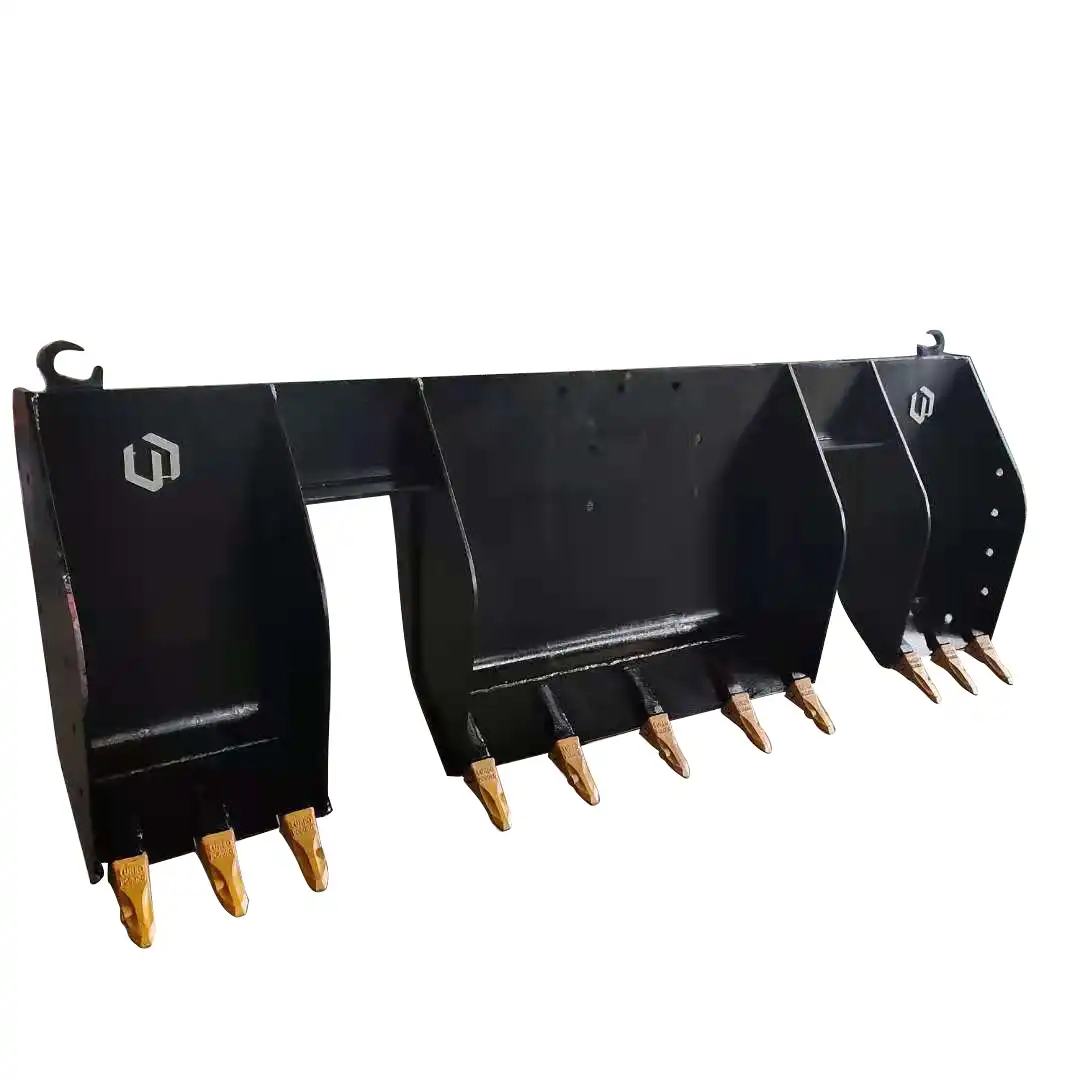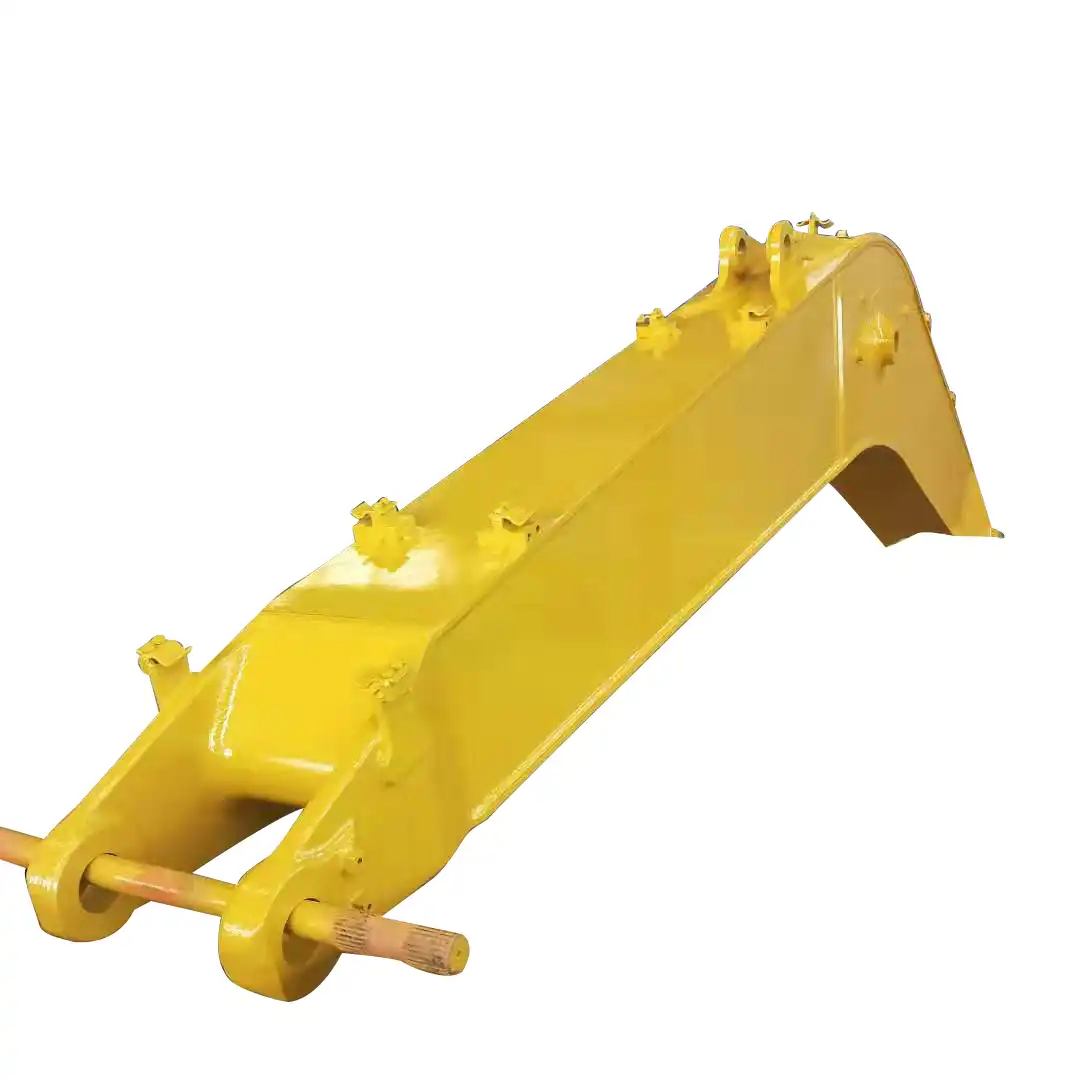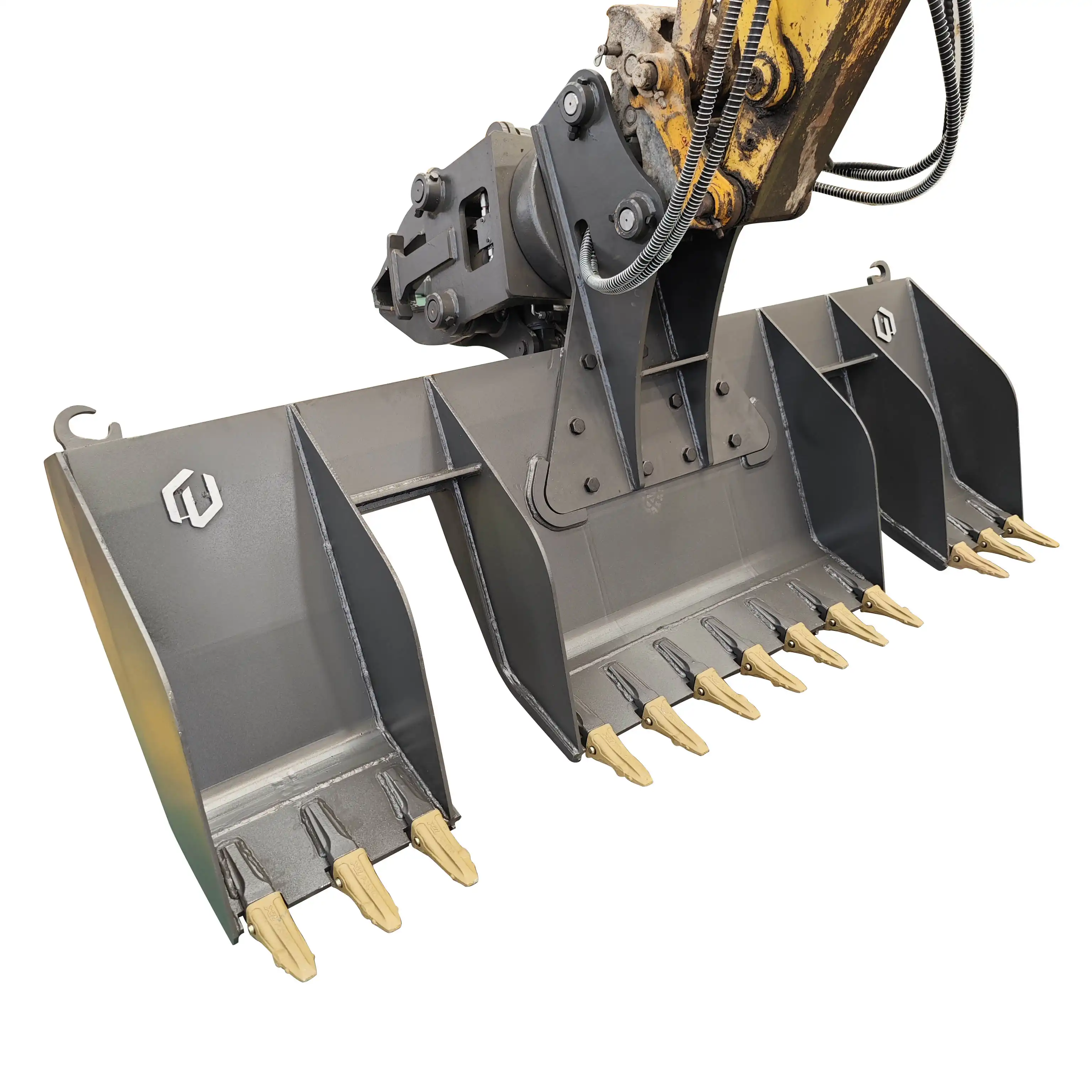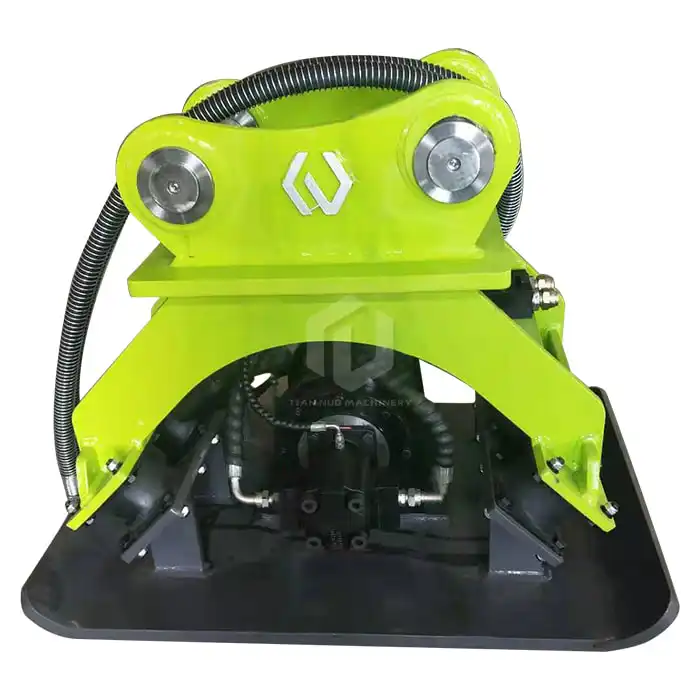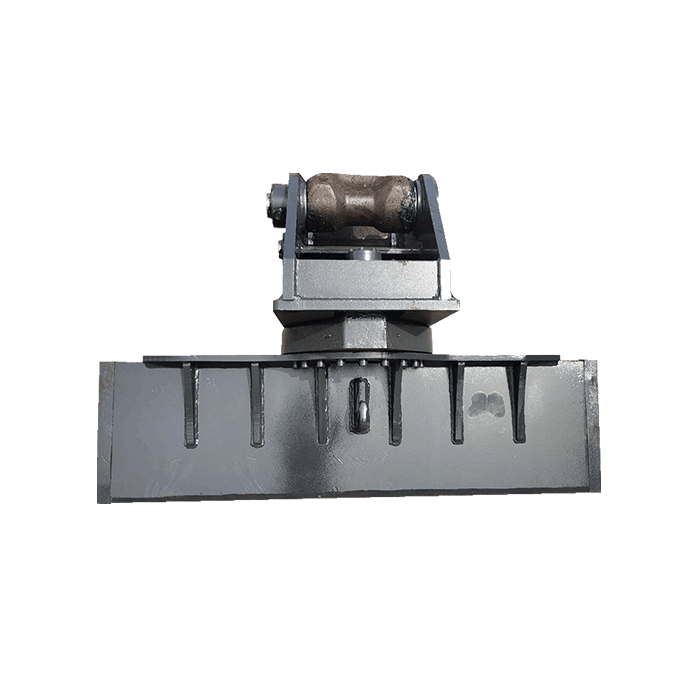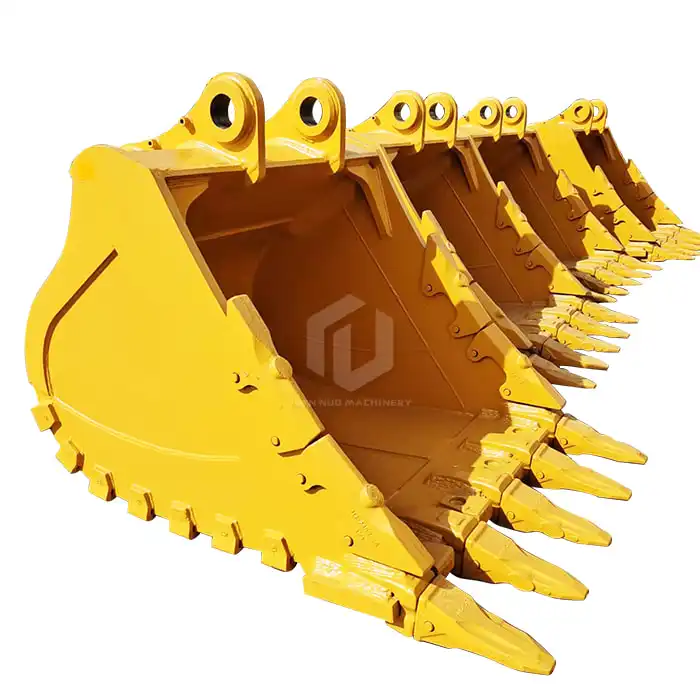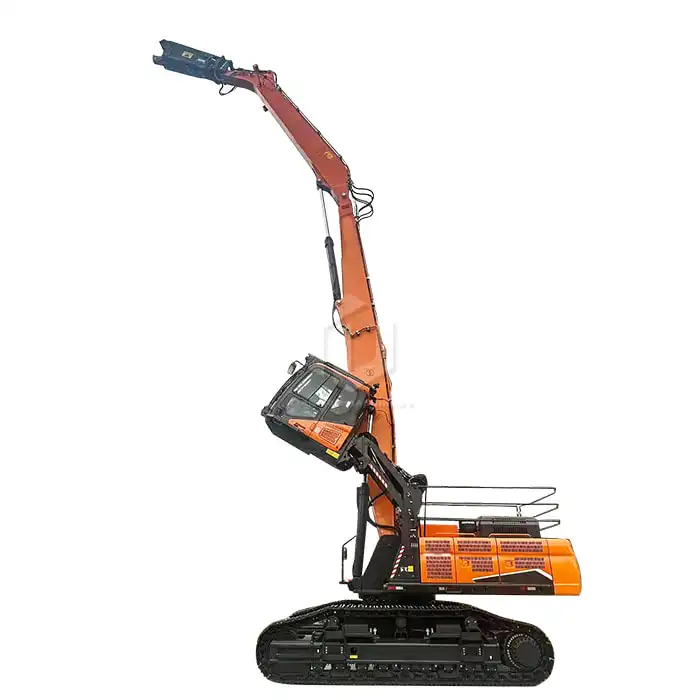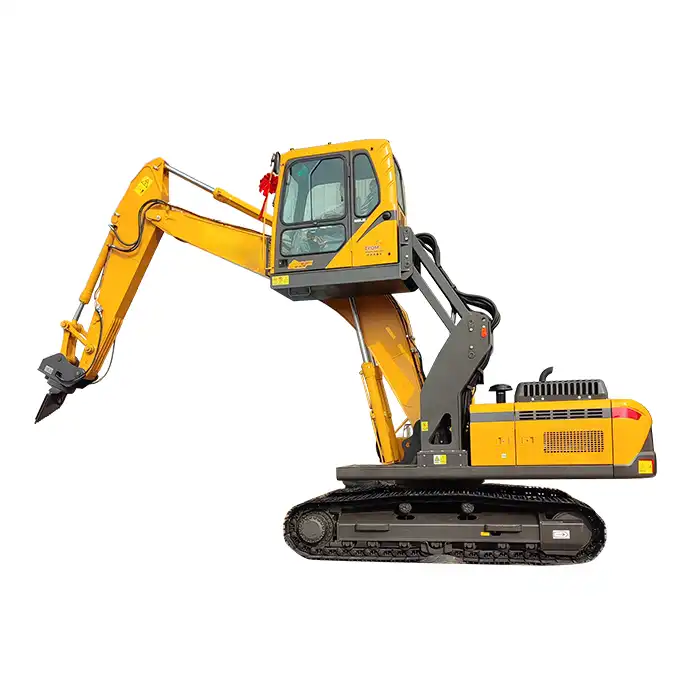How to design an excavator gripper?
Designing an excavator gripper requires a methodical approach that balances engineering principles, material science, and practical operational considerations. The process begins with a thorough assessment of the intended application environment and specific material handling requirements. Engineers must evaluate factors such as the type and size of materials to be gripped, operating conditions, excavator specifications, and industry-specific requirements. This initial analysis forms the foundation for determining functional parameters including grip force, jaw configuration, and hydraulic specifications. The design process then progresses through conceptual design, mechanical engineering, material selection, hydraulic system integration, and rigorous testing.
Determine Functional Requirements
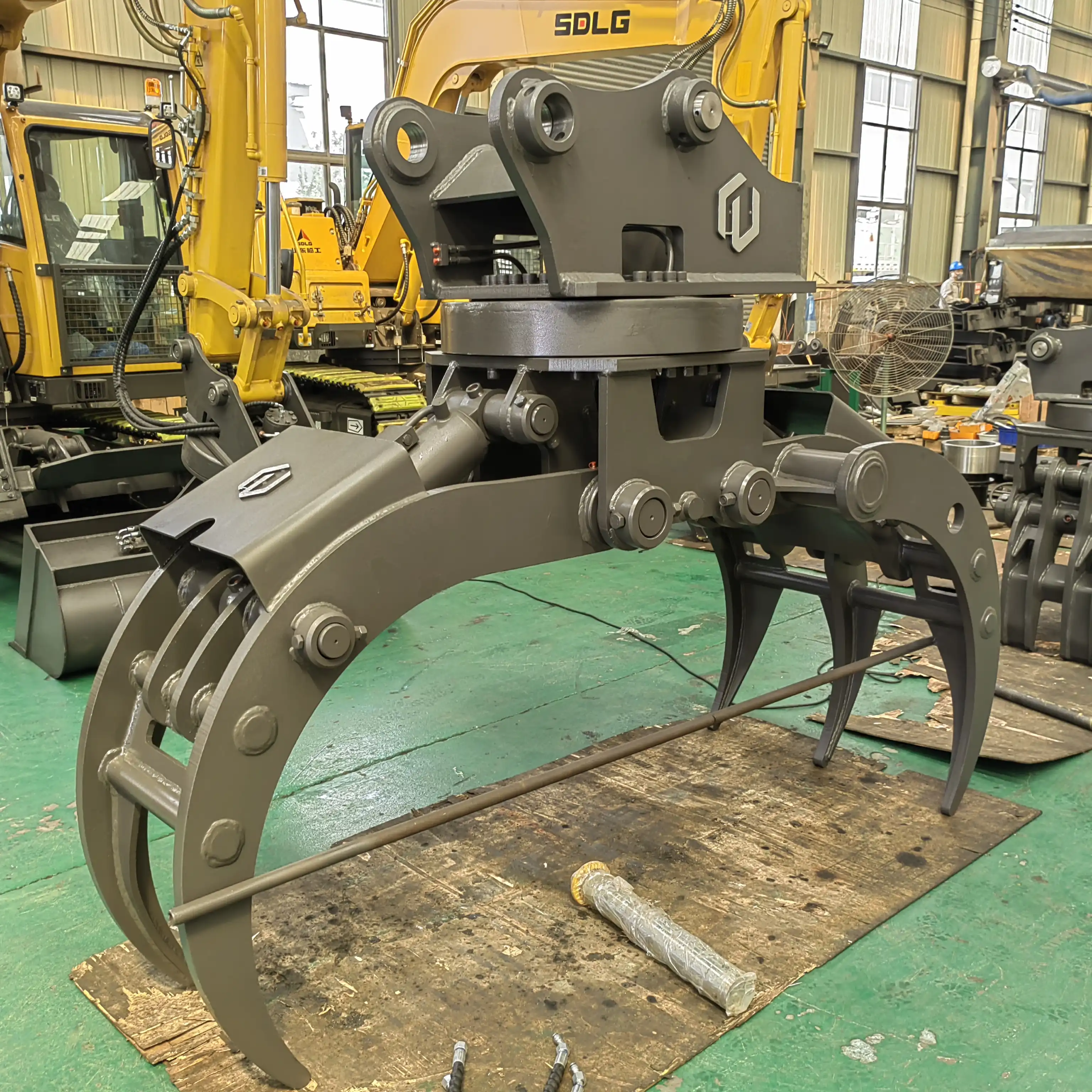
Application Analysis
The foundation of effective excavator gripper design begins with a comprehensive analysis of the intended application. This critical first step ensures the final product aligns perfectly with real-world operational demands and environmental constraints.
Application analysis involves detailed examination of the materials to be handled, including their physical properties, dimensions, and weight ranges. Engineers must understand whether the gripper will primarily manage uniform objects like railway ties or irregular materials such as demolition debris. Material characteristics including density, abrasiveness, and moisture content significantly influence grip surface design and material selection. Environmental factors such as ambient temperature ranges, exposure to corrosive substances, and dust levels impact component selection and protection requirements.
Operational parameters require equal scrutiny, including duty cycle expectations, typical grip durations, and cycle frequencies. High-frequency operations necessitate robust cooling systems and wear-resistant components, while intermittent use permits different design optimizations. Spatial constraints within the work environment may limit gripper dimensions or require specific jaw configurations to access restricted areas effectively.
Industry-specific requirements add another layer to the analysis, with railway maintenance operations demanding precision handling capabilities, demolition applications requiring robust shock absorption, and forestry uses necessitating resistance to organic acids and debris intrusion. This nuanced understanding of application requirements forms the cornerstone of subsequent design decisions.
Performance Specifications
Translating application analysis into quantifiable performance specifications creates the technical framework that guides the excavator gripper attachments design process. These specifications establish measurable parameters that define successful performance in the field.
Load capacity requirements establish maximum weight limitations for safe operation, typically expressed in both static holding capacity and dynamic lifting capacity. These specifications account for safety factors that consider unexpected load shifts or impact forces during operation. Grip force parameters define the pressure exerted by the gripper jaws, balanced to provide secure material retention without causing damage. Advanced designs incorporate variable grip force capabilities that adjust automatically based on material characteristics.
Cycle time specifications detail the expected speed for opening, closing, and rotational movements. These parameters balance operational efficiency against hydraulic system capabilities and control precision requirements. Dimensional specifications establish the gripper's overall size envelope, jaw opening range, and throat depth, all calibrated to accommodate the largest expected materials while maintaining maneuverability.
Durability specifications quantify expected service life under normal operating conditions, often expressed in operational hours or cycle counts between major maintenance intervals. These specifications guide material selection and structural design decisions to ensure cost-effective operation throughout the equipment lifecycle. Environmental performance specifications define temperature ranges, moisture tolerance, and resistance to specific corrosive substances or abrasive materials present in the intended operating environment.
Compatibility Requirements
Ensuring seamless integration between the excavator gripper and host machine requires careful attention to compatibility requirements across mechanical, hydraulic, and control interfaces. These specifications prevent integration issues that could compromise performance or safety.
Mounting interface specifications define the physical connection between gripper and excavator, including pin dimensions, spacing, and load-bearing requirements. These specifications often reference industry standards or manufacturer-specific mounting configurations to ensure proper fitment. Weight limitations consider the excavator's rated lift capacity, accounting for both the gripper's weight and maximum intended load to prevent exceeding the machine's operational capability.
Hydraulic system compatibility addresses flow rate requirements, operating pressure ranges, and circuit configurations. The gripper design must accommodate the host machine's available hydraulic output while incorporating pressure protection features that prevent damage from pressure spikes or flow variations. Hydraulic connection specifications detail port types, sizes, and locations to ensure proper field installation and maintenance access.
Control system integration requirements outline the interface between the gripper's functions and the excavator's operator controls. These specifications address electrical requirements for solenoid valves, sensors, or electronic control modules. Advanced gripper designs might incorporate proprietary control systems that require specific interface provisions for seamless integration with the excavator's existing control architecture.
Design Mechanical Structure
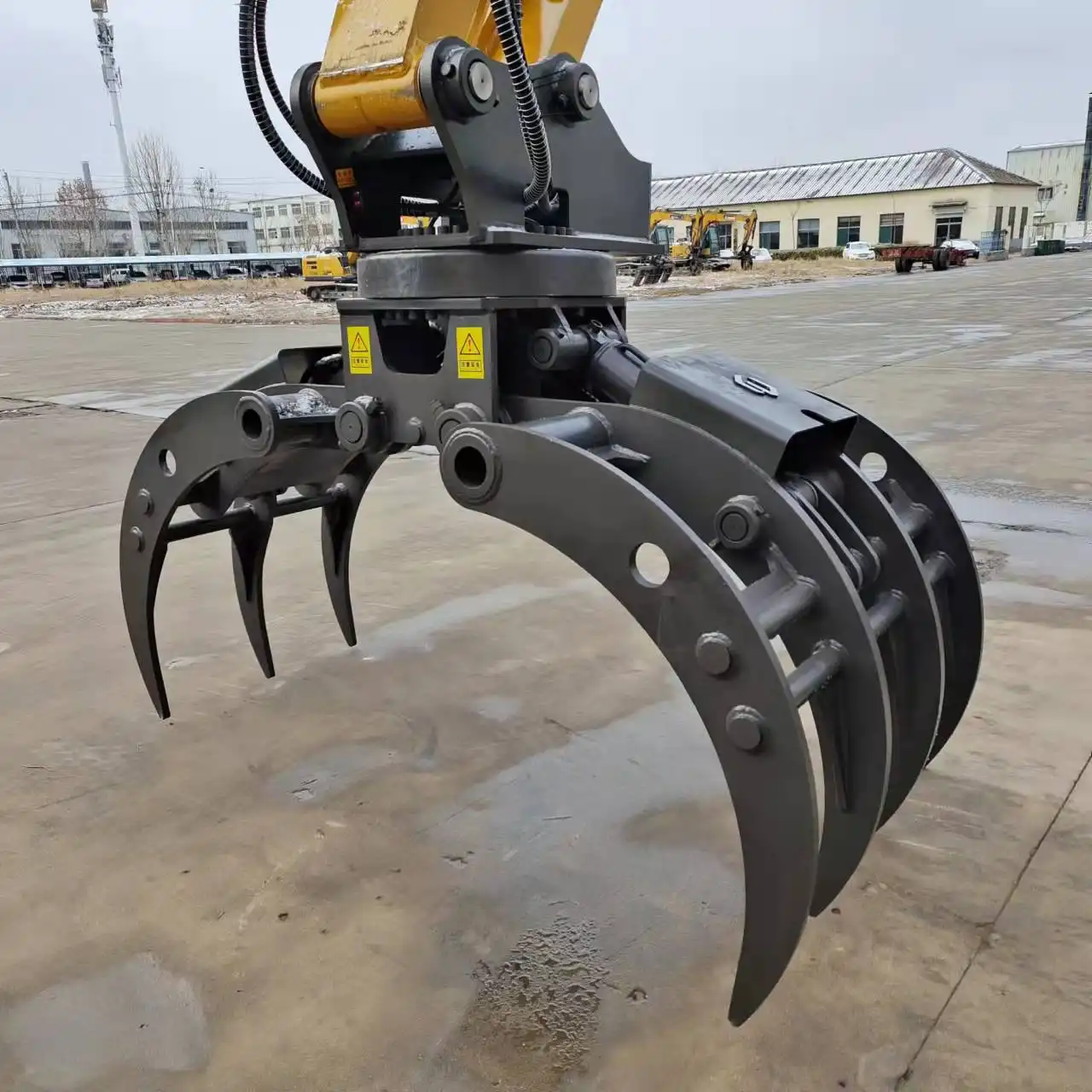
Jaw Configuration
The jaw configuration represents one of the most critical aspects of excavator gripper design, directly influencing the attachment's versatility, gripping effectiveness, and operational efficiency across different applications.
Jaw geometry optimization begins with determining the most effective profile for the intended materials. Curved jaws excel at centering round objects like logs, while straight jaws provide consistent pressure distribution across flat surfaces. The internal profile of gripping surfaces requires equal attention, with serrations, aggressive teeth, or smooth surfaces selected based on material characteristics and damage concerns. Engineers must calculate optimal jaw opening ranges that accommodate the largest intended materials while maintaining sufficient mechanical advantage throughout the gripping range.
Tine design for sorting applications demands particular attention to spacing, penetration depth, and structural reinforcement. Tine spacing balances material retention against the desired sorting function, allowing undersized materials to pass through while retaining target items. Cross-sectional analysis determines the optimal shape for tines, balancing strength against weight considerations while accounting for potential side loading during operation.
Movement Mechanisms
Effective movement mechanisms translate hydraulic power into precise, controlled jaw operations that define the excavator gripper's performance characteristics and operational capabilities.
Cylinder placement optimization determines how efficiently hydraulic force converts to gripping pressure at the jaw interface. Engineers must balance mechanical advantage against cylinder stroke requirements and space constraints. Direct-acting cylinders offer simplicity and reliability, while linkage systems can provide mechanical advantage or modified movement paths suited to specific applications. Some advanced designs incorporate dual-action cylinder arrangements that provide different force profiles for gripping versus crushing operations.
Synchronization systems ensure consistent jaw movement when multiple cylinders or actuation points are employed. These systems may utilize mechanical linkages, flow dividers, or electronic control systems depending on complexity requirements and precision needs. Proper synchronization prevents binding, uneven wear, and potential structural damage from misaligned forces during operation.
Rotation mechanisms add versatility by allowing the gripper to reorient materials without repositioning the entire excavator. These mechanisms typically employ hydraulic motors driving slew bearings or gear systems with sufficient torque capacity for loaded rotation. Engineering considerations include torque requirements, rotational speed control, and structural integration that maintains the rotating interface's integrity under maximum loading conditions. Advanced rotation systems incorporate position sensors and automated stop points that enhance operator control during precise material placement operations.
Select Materials
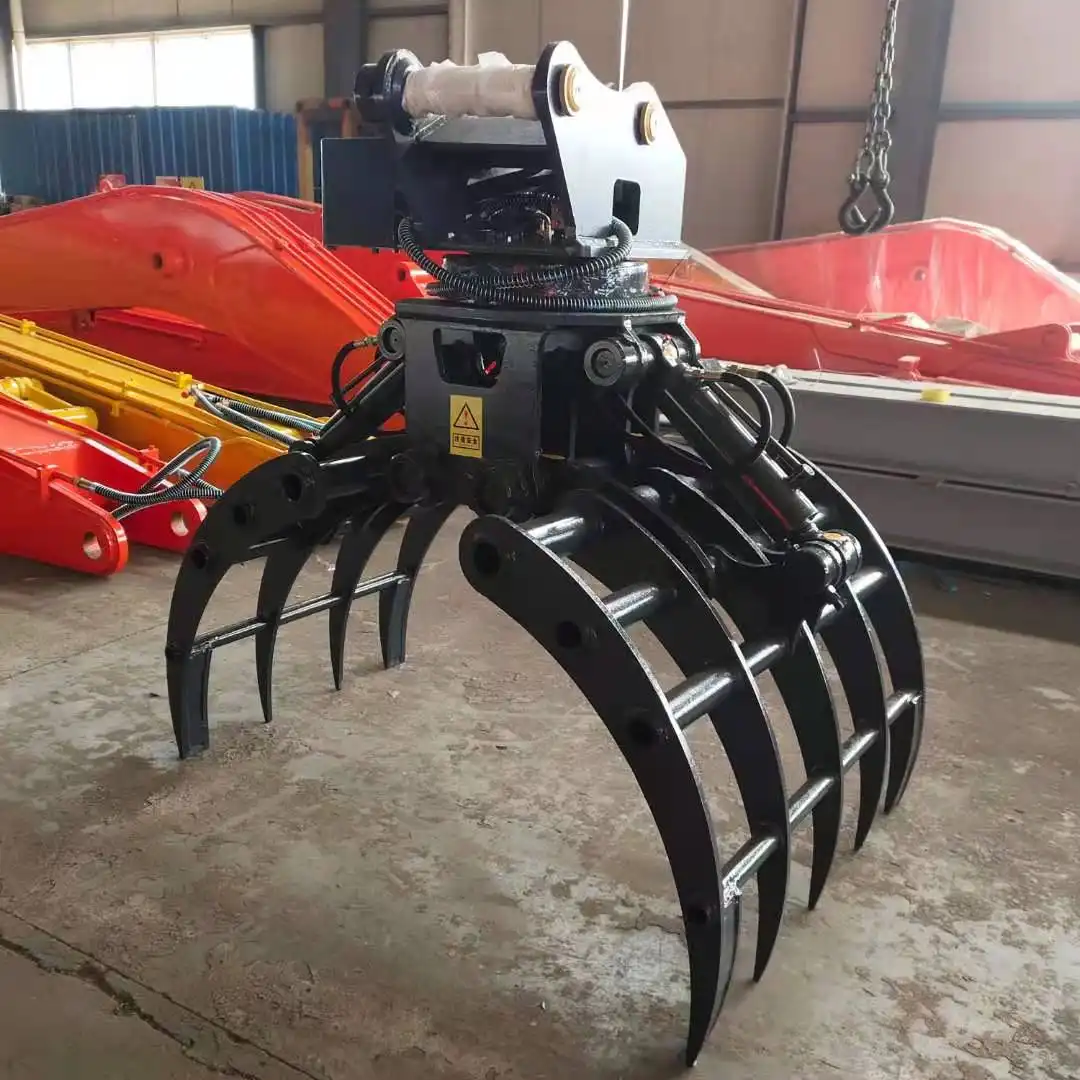
Structural Materials
Selecting appropriate structural materials for excavator gripper components involves balancing strength requirements, weight considerations, manufacturing constraints, and economic factors to achieve optimal performance and service life.
High-strength alloys form the backbone of modern gripper structures, with specific grades selected based on loading requirements and environmental exposures. Common selections include specialized grades of steel such as Hardox, Strenx, or Weldox, each offering different combinations of tensile strength, yield strength, and hardness characteristics. Material thickness calculations balance weight considerations against stress analysis findings, often employing variable thickness strategies that concentrate material at high-stress zones while reducing mass in less critical areas.
Wear-resistant materials address the continuous abrasion experienced at material contact points. Surface hardening treatments such as induction hardening, carburizing, or nitriding enhance wear resistance without compromising the underlying material's toughness. Replaceable wear components fabricated from specialized alloys containing chromium, manganese, or tungsten carbide extend service intervals and reduce lifecycle costs by concentrating premium materials at critical wear points.
Corrosion resistance considerations become paramount in challenging environments including marine applications, chemical exposure, or continuous outdoor operation. Material selections may include stainless steel components for critical areas, specialized coatings, or sacrificial anodes in extreme environments. This corrosion strategy must account for galvanic compatibility between different metals to prevent accelerated deterioration at material interfaces.
Wear Components
Strategic integration of specialized wear components extends service intervals and reduces operational costs by concentrating premium materials at high-wear locations throughout the excavator gripper assembly.
Cutting edge and wear plate designs utilize premium abrasion-resistant materials at material contact points. These components typically employ through-hardened alloys or composite materials with hardness values exceeding 500 HBW (Brinell hardness). Attachment methods allow field replacement without specialized equipment, typically using countersunk bolts with recessed heads to prevent wear from material contact. Progressive designs incorporate reversible wear components that provide extended service life by allowing repositioning when one edge or surface shows significant wear.
Bushing and bearing selections address the concentrated forces and continuous movement at pivot points throughout the gripper structure. Bronze alloys, polymer composites, or hardened steel bushings offer different combinations of load capacity, friction characteristics, and maintenance requirements. Lubrication system integration ensures these components receive adequate protection even in challenging environments, with options ranging from simple grease fittings to automated lubrication systems for high-use applications.
Protective features shield vulnerable components from operational damage and environmental exposure. These include hydraulic cylinder rod boots that prevent contaminant ingress, armored hose coverings in high-abrasion areas, and sacrificial wear strips at points of incidental contact. Edge protection systems prevent damage to cutting surfaces during material acquisition and handling, extending service intervals between reconditioning or replacement.
FAQ
1. What load capacities should be considered when designing an excavator gripper?
Design load capacities for excavator grippers must account for multiple factors including static holding capacity (typically 15-30% higher than maximum expected loads), dynamic lifting capacity that considers material shifts during movement, shock loading during initial material acquisition (often 1.5-2× static capacity), and rotational torque requirements when handling offset loads.
2 . How do hydraulic requirements influence excavator gripper design?
Hydraulic requirements fundamentally shape excavator gripper design through multiple mechanisms including operational speed, gripping force, and control precision. Available hydraulic flow from the host machine (typically 15-60 gallons per minute) determines actuator sizing and movement speeds, with higher flow rates enabling faster operation but requiring robust heat dissipation. Operating pressure capabilities (commonly 3,000-5,000 PSI) dictate cylinder dimensions and structural reinforcement requirements. Circuit design must address sequence timing between multiple functions while preventing pressure intensification at cylinder end positions. Pressure protection through relief valves prevents system damage during operation, while flow control components ensure consistent movement regardless of load variations. Hydraulic designs must also consider oil cleanliness requirements, filtration needs, and cooling capacity for continuous operation in demanding environments.
3 . What materials work best for specific excavator gripper applications?
Material selection for grippers varies significantly based on application requirements. Demolition applications benefit from quenched and tempered steels (380-450 BHN hardness) that resist impact forces while maintaining structural integrity. Recycling operations typically employ manganese steel (work-hardening to 550+ BHN) at material contact points to combat continuous abrasive wear. Forestry applications benefit from chromium-molybdenum alloys that resist both organic acid exposure and impact loading from logs. Railway maintenance grippers often incorporate wear-resistant steels (450-500 BHN) with specialized coatings at grip surfaces to prevent damage to valuable infrastructure components.
4. What testing protocols verify excavator gripper design integrity?
Comprehensive testing protocols for excavator gripper designs include both structural validation and operational verification phases. Static load testing applies graduated forces to critical components while monitoring deflection and strain at key structural points, typically to 1.5× rated capacity. Dynamic cycle testing evaluates fatigue resistance by operating the gripper through thousands of cycles under varied load conditions. Environmental testing subjects the design to temperature extremes, moisture exposure, and corrosive substances relevant to the intended application environment.
Excavator Gripper Supplier
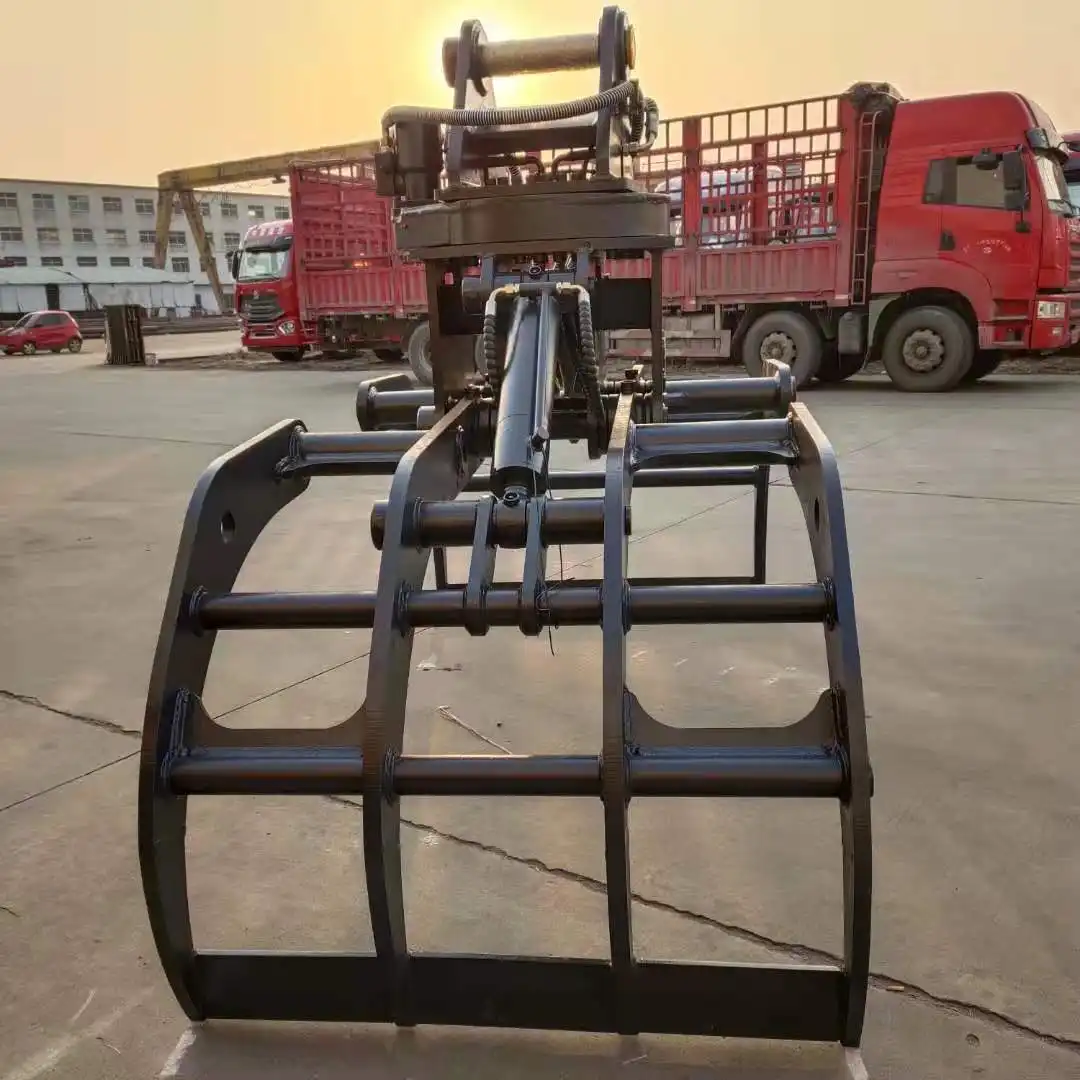
Elevate your excavation game with Tiannuo Machinery's excavator gripper. Our high-strength steel clamp body ensures long-lasting durability, while the adjustable clamp teeth provide versatility for various tasks. The hydraulic system, powered by a reliable oil cylinder, controls the clamp movement with precision through pressure oil. The pipeline's seamless connection to the control valve guarantees smooth operation. Don't miss this opportunity to enhance your excavation efficiency. Contact us at arm@stnd-machinery.com, rich@stnd-machinery.com, or tn@stnd-machinery.com to get started today.
References
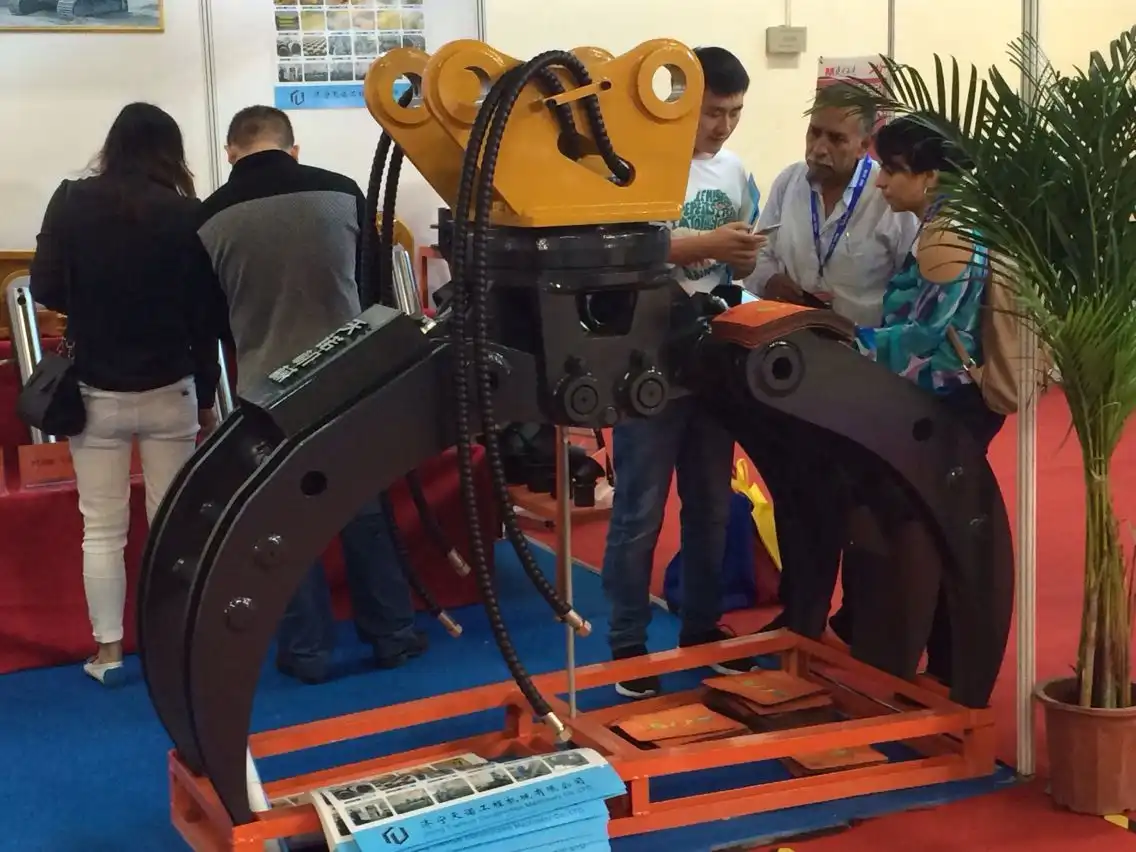
Advanced Materials in Heavy Equipment Attachments: Engineering Applications and Performance Analysis, 4th Edition
Hydraulic System Design for Mobile Equipment: Principles and Practices, Volume 2
Structural Engineering for Excavator Attachments: Load Analysis and Material Selection
Wear-Resistant Materials in Construction Equipment: Selection Criteria and Application Guidelines
Journal of Heavy Equipment Engineering: Attachment Design Methodologies and Testing Protocols
International Standards for Excavator Attachment Design: Safety Requirements and Performance Metrics
About Author: Arm
Arm is a leading expert in the field of specialized construction and railway maintenance equipment, working at Tiannuo Company.

